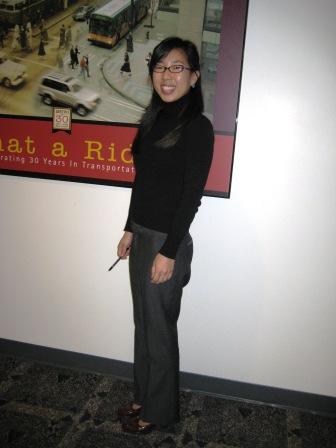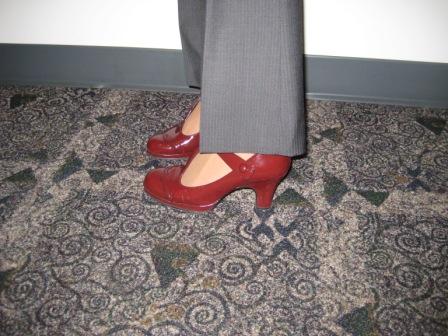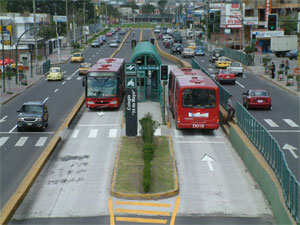On Tuesday night, I took the 14 home from the TAC meeting. The bus was packed with people, including several homeless people, who all got off at the same stop. The last woman to get off was in worse shape (both mentally and physically) than the rest and took almost five minutes to make it from the disabled section to the front of the bus. She stopped to stare at the floor, stopped to talk to herself, and, though she was barely able to move the cart she was pushing, became extremely agitated with anyone who tried to help her.
I can’t lie: My patience and compassion were in short supply. (I had things to do, after all, not the least of which was to inhale a whole handful of Excedrin as soon as I arrived home.) I huffed. I sighed. Near the end of her trip down the aisle, I had begun to roll my eyes.
After she had finally made her exit, the man across from me started joking with his friend about how badly she had smelled. The driver joined in.
“Now that I know,” she said, “I can refuse to transport her.”
At this, another woman–one who had attempted to help the homeless woman with her cart–jumped to the front of the bus and began to lecture the rest of us.
“It only takes two months to become homeless,” she shouted down the aisle. “It only takes a couple more to become depressed. We should be thanking God for what we have.”
The driver sucked her teeth: “I’d like to thank God for soap and water.”
***** *****
I am sensitive to the fact that this incident is a good example of the reason a lot of my own peers choose not to ride the bus. It’s not just about the sensory unpleasantness of being near people in dire circumstances, or being reminded of the desperation that we might otherwise prefer to ignore. The thing is, folks don’t necessarily have 30 minutes to get from downtown up the hill to the Central District.
As a person who rides city buses (Toto, we’re not on the 545 anymore) on a daily basis, I realize that time losses like these are balanced by time savings in other areas (never having to search for parking; bus-enabled multi-tasking; no oil changes, tire changes, scheduled maintenance, or fill-ups; etc.), but you can’t explain that to a bus-averse person who’s on his second ride. And while I strongly believe that Metro should work to attract the riders who have a choice, the agency, with its limited resources, also has an obligation to serve (and certainly no right to ridicule) elderly homeless women who need transportation to shelters.
So yet again, I am confronted with this question: How do we create a public transportation system that truly serves everyone?
I’m not sure I know. I’d love to hear your thoughts.




